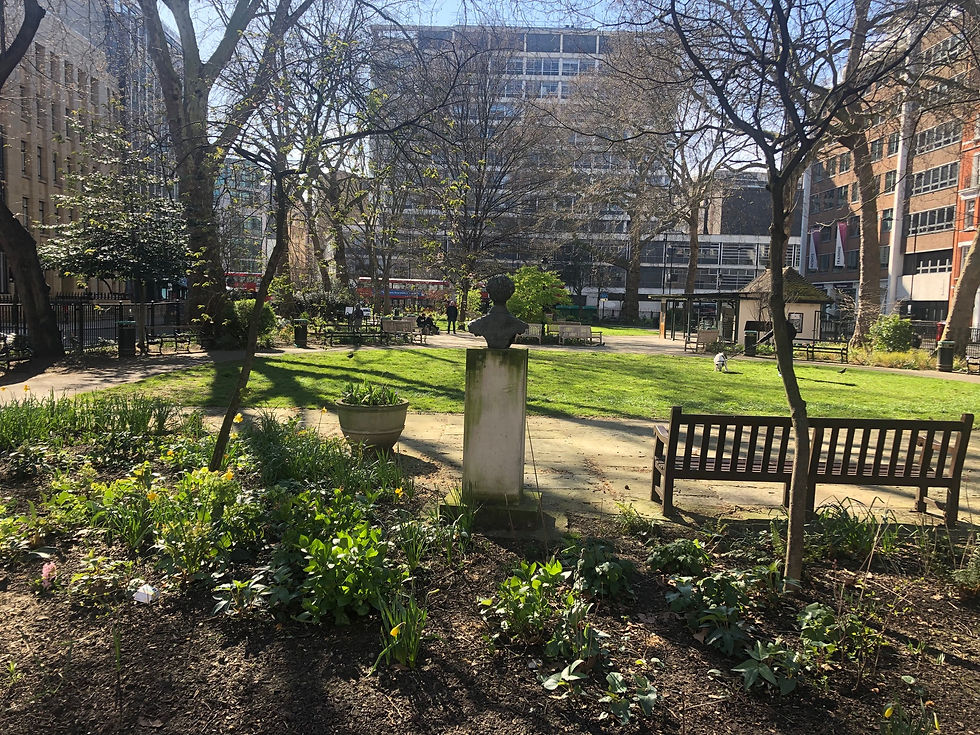Red Lion Square, Holborn
- James Hamill
- Mar 28, 2020
- 2 min read
Whilst it may not be my absolute favourite of squares in London, Red Lion Square near to Holborn tube station doesn’t half pack a punch when it comes to cool stuff that has happened there over the years.
It is said to be the final resting place of Oliver Cromwell who ruled England in the capacity of Lord Protector during the 1650s after a Civil War in the decade before that. Not that you would know it as there is no plaque commemorating him. In fact, he was originally buried with full honours at Westminster Abbey. However, with the restoration of the monarchy in 1660, his body was dug up, stored overnight in the Red Lion Inn just around the corner (which still exists) before being hung in chains and then unceremoniously being chucked in a pit, that pit being the current Red Lion Square. (On another note, his head was cut off and popped up on pole outside Westminster Hall and after being sold on for ever increasing amounts to a variety of owners, it eventually ended up being buried beneath the floor of the antechapel at Sidney Sussex College, Cambridge in 1960. Yes, 1960).
Rather less gruesome is the association of Red Lion Square with the pre-Raphaelite Brotherhood. This was an artistic association that harked back to the days before Raphael and the Renaissance style of painting. Rather than painting traditional elegant, unnatural and classical poses, the pre-Raphaelites painted serious subjects often inspired by the bible, medieval romances, Arthurian legends, Chaucer and Shakespeare with bags of intense bright colours rich in detail and painting directly from nature itself. One of the founders of this movement, Dante Gabriel Rossetti lived at Number 17 for several years along with other key members Edward Burne-Jones and William Morris. One of the most famous paintings is Ophelia by Millais, which you can see in Tate Britain. (I do tours there, drop me a line!)
Other famous residents included John Harrison at Number 12, who solved the problem of longitude and invented the marine chronometer which revolutionised navigation and greatly increased the safety of long-distance sea travel. And tucked in one corner is Conway Hall, a wonderful Art Deco style venue renowned as a hub for free speech and independent thought and which hosts a wide variety of lectures, classes, performances, community and social events.
There is a small café in the middle of the square and lots of benches as well as a few commemorative statues including a bust of Nobel laureate and philosopher Bertrand Russell and a statue of Fenner Brockway, politician and anti-war activist.
As with all London squares, worth a visit even if just to take a breather from the city surrounding you.










Comments